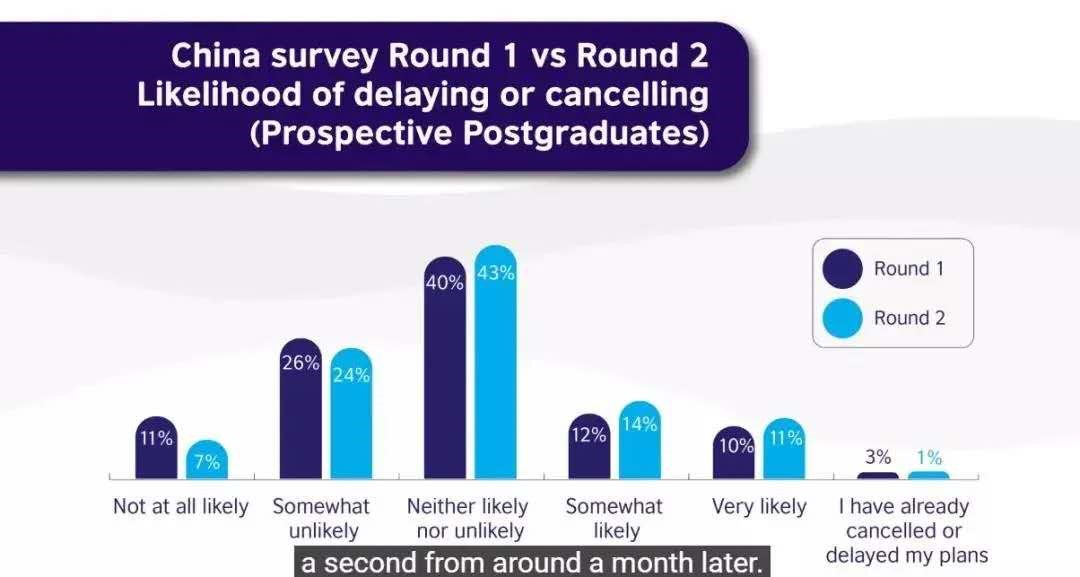托福听力备考,靠着自己闭门造车题海苦练的收效有时候并不理想,因为考生往往很难发现自己身上存在的问题。今天小编给大家带来这些托福听力备考的学习建议你都知道吗,希望能够帮助到大家,下面小编就和大家分享,来欣赏一下吧。
这些托福听力备考的学习建议你都知道吗?
听不懂一定要看原文
练习过程中对于文章或段子听不懂是否应该硬听,直到听懂为止呢?否,千万不要这样做,听3到5遍之后,若发现听不懂应马上看原文才是正确做法。但看过原文之后应该反复听,直到听到关键词都能够大脑条件反射,做到不用想也能知道记住。对于听力而言,反复听已听懂的要比听听不懂的重要的多,同时效果也好很多。因为当你听不懂而去翻原文时很少是因为单词不认识耳听不懂,大多是熟词但出现场合改变所造成的。
听力素材反复听十遍
在考试前一定要把所有的听力过一遍,可能要花两天时间。你可以一边做事一边听,要求是你一听到小段子,你就知道答案是什么,是考事件,还是时间,或人物!这段子的重点是想考你什么。同时培养耳朵和大脑的条件反射。这样会使你在考试时能够在心态起伏之前就听出答案,这对于大家稳定和提升考场表现是很有好处的。
要学会带着问题去听
带着问题去听,会使你听力一听完,就能直接找到答案。而且也可以帮助大家有选择的去听取需要的信息,这个技巧在面对长文章时是非常有效率的。考生先看文章的题目,再看答案,把文章的内容和重点先有所了解,而且要有对答案,文章的问题提法有所猜测,把自己的猜测和实际听力去对比,你会发现听力讲的事你有所了解的事情,而且有过思考的事,这样化被动为主动,是很有帮助的。大家要能够使自己的猜测准确,就需要平时的多听,多练,多想。除了练没有别的任何方法。
2020托福听力练习:嘈杂环境中青蛙发出视觉信号
Ask anyone what sound a frog makes and they'll probably say ribbit.
But there's only one frog that makes that sound:the Pacific chorus frog.
It may have become the go-to frog call because it just happens to live near sound artists in Hollywood.
Herpetologists have long known that frog calls are more diverse than just ribbit.
But their communications are more diverse than just calls—they also signal each other by sight.
Say you're a male of a species called the Brazilian torrent frog.
And you live alongside a fast-flowing stream in the Amazon jungle.
You happily chirp away, advertising your availability to whatever female torrent frogs are around.
But when another male comes too close, your chirps give way to peeps and squeals.
So you wave your red and brown arm in front of your cream-colored face.
The ensuing color contrast turns your body into a warning light.
The intruder gets the hint and hops away to bother someone else.
Brazilian zoologist Fabio P. de Sa witnessed Brazilian torrent frogs using eighteen different visual displays, five of which had never been seen before in other frogs.
He and colleagues published their findings in the journal PLOS ONE.
The frog semaphore system probably developed because streams are noisy places.
Instead of shouting over the sound of rushing water, these frogs communicate by jumping, head bobbing, arm waving or even wagging their toes.
The set of signals is the most sophisticated ever documented for a frog, but de Sa thinks that other frogs could have similarly complex repertoires, if only researchers would take the time to look.
One thing is certain: it's not easy being green, but it's simple to be seen.
如果你问别人青蛙的叫声是什么样,得到的答案可能会是呱呱声。但只有一种青蛙会发出这样的叫声,
那就是太平洋合唱哇。
由于碰巧居住在好莱坞的声音艺术家附近,因此这种青蛙的叫声就显得非常独特。
爬虫学家很早以前就已知晓青蛙的叫声不只呱呱,而且又多种多样的叫声。
但青蛙的交流方式除了叫声外还有多种形式—它们彼此之间也会通过发送信号进行交流。
假如你是一只雄性巴西湍蛙。
青蛙的信号.gif
而且你在亚马逊丛林激流边生活。
你对周围生活的雌性快乐的发出吸引的叫声。
但当其它雄性逐渐靠近,你的叫声马上变为唧唧尖叫。
这时你就在自己的奶白色脸前挥舞红褐色的手臂。
这种鲜明的对比色会将你的身体变成警示色。
收到这种讯号的入侵者就会跳走去打扰别人。
巴西动物学家法比奥·德萨就曾亲眼目睹巴西湍蛙使用18种不同的可视信息,而其中5种在其它青蛙中从未出现过。
他和同事们在《公共科学图书馆》杂志上发表了这项研究结果。
由于河流湍急,青蛙的信号系统可能会因此进化。
这些青蛙不再用嘹亮的歌声喊过湍急的河流,而是通过跳跃,晃动头部,摆动手臂或甚至摇摆脚趾等方式交流。
这种信号是蛙类研究中有记载以来最为复杂的方式,但德萨认为只要研究人员们肯花时间观察就会发现其它种类的青蛙或许有着同样复杂的行为方式。
而能够确认的一件事情是,变绿不易,但不难被发现。
1.happen to 偶然;发生
例句:If you happen to talk to him, have him call me.
如果你碰巧能和他说话,让他给我打个电话。
2.turn into 转化为;转变;变为
例句:I think I have got to stop or I might turn into a machine.
我想我得停下来了,否则我就会变成一台机器。
3.instead of 而不是
例句:The farmers will be paid for their grain in cash, instead of IOUs.
农民卖粮,将以现金支付,而不是白条了。
4.shout over 喊过
例句:The painest tear shout over graves after the words left unsaid and dids left undone.
最痛苦的泪水从坟墓里流出,为了还没有说过的话和还没做过的事。
2020托福听力练习:气候变化影响美西南部针叶林
As you sit round the Christmas tree, consider the TLC you give O Tannenbaum:plenty of water and a relatively comfortable climate.
Wouldn't want to dry out the tree, after all.
Now consider that in the house we all live in—the planet—we're hardly giving the same courtesy to your Christmas tree's wild cousins.
(Who, I might add, are actually still alive.)
As the planet warms, droughts are getting even drier—and they're getting hotter too.
In fact it's getting so bad that researchers are now forecasting that conifers in the arid southwestern United States could be completely wiped out by the end of the century.
No more pinyon pines, ponderosas or junipers. No more forests.
"It's definitely a distressing result for all of us.
None of us want to see this happen.
It's a bummer, honestly."
Sara Rauscher, a climate scientist and geographer at the University of Delaware.
She and her colleagues gathered data on how real-world evergreens in the southwest respond to drought and heat—they basically starve, unable to carry on photosynthesis or transport water.
The researchers then combined those physiological data with a half dozen projections of how climate change might proceed.
"But no matter what model we used, we always saw tree death."
Specifically, 72 percent of the trees dead by 2050, and a near-complete annihilation by the year 2100.
The results are in the journal Nature Climate Change.
But we'll always have Paris, right?
"Even if we used a scenario similar to what the Paris accords have agreed upon—so limiting global warming to 2 degrees—we still saw widespread die-off.
It happened later in the century, but it still happened."
That said, the study does not account for trees'ability to adapt, or whether new populations could find friendlier climes.
That is, whether conifers in the southwest can pull up roots fast enough to beat climate change.
As you sit round the Christmas tree, consider the TLC you give O Tannenbaum: 当你围着圣诞树坐下,想着对它的细心呵护:
plenty of water and a relatively comfortable climate. 足够的水份及相对舒适的气候条件。
Wouldn't want to dry out the tree, after all. 至少你不会想到这棵树会干枯而死。
Now consider that in the house we all live in the planet we're hardly giving the same courtesy to your Christmas tree's wild cousins. 现在想想我们居住的房子,我们所生活的地球 我们从未对它们有对圣诞树这般的礼遇。
Who, I might add, are actually still alive. 补充一下,如果它们实际上还活着的话。
As the planet warms, droughts are getting even drier and they're getting hotter too. 随着地球变暖,干旱问题变得越来越严重 也越来越炎热。
In fact it's getting so bad that researchers are now forecasting that conifers in the arid southwestern United States could be completely wiped out by the end of the century. 实际上,情况变得越来越糟糕,以致于研究人员现在预测美国西南部的针叶树可能会在本世纪末灭绝。
No more pinyon pines, ponderosas or junipers. No more forests. 那时候将不会有松树、黄松木及杜松。而且森林也将不复存在。
"It's definitely a distressing result for all of us. “对我们来说这绝对是令人心痛的结果。
None of us want to see this happen. 任谁都不想看到这种情况发生。
It's a bummer, honestly." 坦白说,这绝对是令人不愉快的经历。
Sara Rauscher, a climate scientist and geographer at the University of Delaware. 特拉华大学气候学家及地质学家萨拉劳斯尔说道。
She and her colleagues gathered data on how real-world evergreens in the southwest respond to drought and heat they basically starve, unable to carry on photosynthesis or transport water. 萨拉和她的同事们收集了美国西南部常青树如何应对干旱及树木在失去养分不能够进行光合作用运输水分的高温数据。
The researchers then combined those physiological data with a half dozen projections of how climate change might proceed. 研究人员将这些树木的生理数据同未来气候变化的预测进行结合。
"But no matter what model we used, we always saw tree death." “但无论我们使用何种模型,得出的结论都是树木会面临灭顶之灾。
Specifically, 72 percent of the trees dead by 2050, and a near-complete annihilation by the year 2100. 确切地说,到2050年72%的树木会死亡;2100年所有的树木都会消失。
The results are in the journal Nature Climate Change. 这项研究已在《气候变化》期刊上发表。
But we'll always have Paris, right? 但我们还有巴黎气候变化协议。
"Even if we used a scenario similar to what the Paris accords have agreed upon so limiting global warming to 2 degrees we still saw widespread die-off. 即使我们运用到巴黎气候变化协议所规定的类似场景 将全球变暖的温度控制在2度,仍然出现树木大面积死亡。
It happened later in the century, but it still happened." 这种现象会在本世纪末出现,仍旧无法避免。
That said, the study does not account for trees'ability to adapt, or whether new populations could find friendlier climes. 也就是说,这项研究没有将树木的适应能力或未来能否找到更适合自身生长地的新品种纳入考量。
That is, whether conifers in the southwest can pull up roots fast enough to beat climate change. 美国西南部的针叶林是否能够足够快的转移地点应对气候变化。
这些托福听力备考的学习建议你都知道吗相关文章:
★ 二战托福备考攻略
这些托福听力备考的学习建议你都知道吗
上一篇:雅思口语评分规则值得一看






